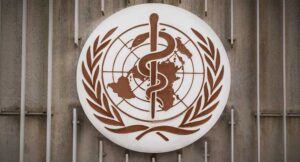Since the major reorganization and staff reduction at the U.S. Department of Health and Human Services was first announced last week, there’s been little explanation so far of why whole departments have been cut. There have also also been no analyses shared of how IT and digital infrastructure systems will be managed across HHS, how their security will be maintained and how their program operations assured after the planned upheaval.
Without transparency about agency plans after the cuts have been made, lawmakers and healthcare stakeholders can only speculate on the effects that staff and contract cuts will have on these IT systems and the people relying on them. It’s often unclear whether or where certain divisions have any acquisition authority, fiscal oversight or strategic continuity.
HHS said by email Monday that Secretary Robert F. Kennedy and other leaders focused personnel cuts on “redundant or unnecessary administrative positions,” providing information as background from a deputy press secretary and referring us to a previous statement, an HHS fact sheet and Secretary Kennedy’s social media post on X.
Loss of knowledge at CIO office
We interviewed two individuals this week with inside knowledge of recent cuts at the Office of the Chief Information Officer and the contract lead on a data project that’s still in operation.
“It was a huge shock to everybody,” said a former leader with a CV rich in health technology program leadership across multiple federal agencies who agreed to be interviewed without further identifiers.
“Our entire division of information technology was RIFd,” they said, referring to reductions in force. “That includes our chief information officer, our chief security officer and all our IT folks who manage the IT for the agency.”
At the Office of Management Services, which handles HR and contracts, “they were also all RIFd.”
The former hybrid full-time employee with first-hand knowledge of OCIO operations took a retirement option that keeps their benefits and pay active until Sept. 30, they said.
“There was never a plan, there was never a process – and there was never any input from any government employees on what was going on,” they told Healthcare IT News on Tuesday. “None of the senior heads had any insight into this. None. Nobody.”
According to an HHS deputy press secretary providing background, across the department’s 28 divisions, the department had 41 chief information officers.
But the idea that there are too many CIOs could be an oversimplification when the sheer amount of data and systems for the nation’s second largest federal department are considered, the source said.
“It was very CIO-heavy,” they acknowledged. “Part of that was the specialty of systems, the special knowledge that you needed to have with these systems, the capabilities that you needed to have, and certain development teams you needed to have because they have very unique applications – especially at [National Institutes of Health],” they explained.
“They change frequently because you’re in a development environment. You have to be ready and be very flexible and agile, and you have to have your different types of security paperwork work and government compliance that you need for these systems.”
While some think the department’s CIO designations were “territorial,” the sheer number of systems, and their complexities, account for a certain degree of necessity.
“What HHS has is not uncommon,” they said, adding that there were efforts to consolidate CIO roles.
But with Senior Executive Service staff all gone from the OCIO – through the “Fork in the Road” program and voluntary retirement or by being cut on April 1 – the loss of policy and governance expertise at HHS is near impossible to measure. Laid off from HHS in the purge are some career staff who have amassed 20-30 years of enterprise knowledge.
“We were all the policy, we were all the governance, we were what got back to [Office of Management and Budget],” the source said. “Being the policy arm, you’ve crippled it. Now, we can’t funnel up any of the information that you need for Congress or OMB or funding – and we can’t issue the policies and guidelines down.”
When asked about the current holes in the oversight and operation of the department’s digital infrastructure, this person registered concern for cybersecurity and data reporting.
“Well, we’ve let go of the lead of cybersecurity,” they said.
“You’re impacting development, you’re impacting growth, you’re impacting research systems, you’re impacting facilities systems, and even tracking those high-value assets is an impact because those are mission-critical systems,” they added. “Now we’ve got nobody to report it, too, because they basically got rid of the SES who runs security.”
Some HHS leaders were offered the option of relocating to a new job – far away in Alaska, Montana or New Mexico, according to a National Public Radio report.
One top leader was reportedly offered a transfer to work at Indian Health Services.
“They told him to move to Montana, and he was the one that was leading all the governance and policy,” they said.
La Monte Yarborough, the lead chief information security officer of HHS since January 2022, who previously served as CISO for HHS’ Office of Inspector General, spoke with us last year about the department’s outreach efforts to bolster healthcare organizations’ cybersecurity postures.
We reached out to HHS again on Tuesday, asking for a statement on how SES staff from OCIO fall in the department’s definition of redundant or unnecessary administrative positions, and we will update this story if there is a further response to our questions.
Deleting entire operations
Getting rid of duplicative administrative functions doesn’t cover “entire operational division,” said an HHS IT employee affected by the reduction-in-force cuts. “Even if there’s program staff working, in order to work effectively in the government, you still have contracts,” they said.
“You still need to get government-furnished equipment, [personal identity verification] cards for your contractors. None of that can happen without what they term admin support. It’s especially problematic for our division of IT because they do things like oversee our cloud environment and manage the government websites.
“Right now, you have scenarios where that tractor is working, but they have no technical oversight right now because all of the IT business owners, the government officials, are RIFd,” they added.
HHS had noted on background that there were “dozens of IT departments,” along with 40 procurement departments and eight senior finance officials.
The department said its reorganization from 28 to 15 divisions is necessary and is now detailing the structure of each redefined division to streamline operations, enhance responsiveness to the American people and ultimately improve the nation’s health as part of the “Make America Healthy Again” initiative.
“I don’t think there’s any plan for how that’s going to work right now,” this person said. “In the meantime, you just have everything existing without the oversight or even ability to get things done in the interim.”
According to the SES OCIO insider we spoke to, HHS is looking to centralize development at Centers of Information Technology at NIH.
“That’s really not their mission,” they said. Beyond supporting NIH campuses and functions, they “now have to support all the IT structure and be the central hub,” adding: “They don’t even have the network diagrams or the understanding of all the components.”
Potential cracks could follow cuts
Because big data programs at ASFR Response Coordination & Data Integration Team rely on contractor support, “I think the first immediate crack is there are no contract staff to renew some of these contracts,” said the HHS IT employee said.
That team is supposed to merge with the Assistant Secretary for Planning and Evaluation to create a new Office of Strategy.
“I think there’s a lot of work that has to be done to figure out how to keep basic operations moving, both in interim and then also in the future,” they said.
“I think first people are going to have to realize what they’re missing out on,” they added, citing programs such as Head Start, the Children’s Health Insurance Program, government research grant funding, many university partnerships and pencils down on development new treatments.
“The clinical center has been locked down,” they explained. “People were more stressed out there during this time than they were during COVID because you didn’t have the freedom to treat people.”
Without anyone overseeing HHS contracts, whatever IT, cybersecurity and innovation work there could be will likely go to a contracted federal workforce.
“But then again, they just fired all the people who administer the contracts and administer [human resources],” they said.
Ethics bind for rehired employees
After two decades of service, the SES OCIO insider also said they could predict where the agency was heading, “especially when they started shoving us into offices.”
President Donald Trump questioned the productivity of federal employees working from home and ordered a return to in-person work by the end of January. In some cases, the resulting overcrowding at offices and over reliance on connectivity have also reduced employee productivity and hobbled service delivery.
“We had no office space. We had no room. … You had no privacy or confidentiality,” they said. Contractors could overhear “every word I said.”
Terminations came so swiftly that some employees who oversee contracts never saw their RIF letters sent by email just after 5 a.m. on April 1 when they were locked out of networks at midday.
The HHS IT employee, who has been with the agency for more than a decade (speaking on the condition of anonymity because they expect their official termination of benefits and pay to be June 2), has direct hands-on knowledge of data contracts. They described sitting at their desk and suddenly not able to access anything, including their email.
“I think for the time being, considering we weren’t provided with complete and accurate information for our separation, we’re still waiting to get clarity on some of those details before we can really move on and start taking new jobs.”
They also said they may be on a short list to be rehired, as they were assigned to oversee a presently active HHS program.
But with that comes the “ethics prohibitions for federal staff to work as a contractor on things that they were involved in previously,” they noted.
“From what I’m understanding, the contracts, writ large in the government, are at risk, and some are being terminated or cut, reduced. So I think it’s very much uncertain what the contracts will look like,” the OCIO insider said. Healthcare IT News









